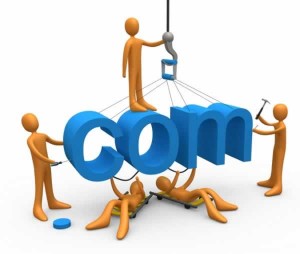Blueprint For Online Success: How To Plan Your Website
Creating a website is not that far removed from other traditional marketing in that a thorough initial analysis is crucial to the overall success of the project.
Simple sketches to identify your information flow and user interface become the building blocks of how you will position yourself online.
The website design should be based on the content, not the other way around. If you look into any successful website, its structure and information architecture likely entailed a good amount of planning and research.
Having an understanding of this concept, you should blueprint your website with the following elements in mind:
Objective: What are you trying to do with this website? It’s crucial that you identify your objectives and goals in order to determine the direction the site will take.
Competitive analysis: Understanding what your competition is doing will help you compile a knowledge base that can be used in strengthening your brand and creating a differentiation that will help you compete in your market. Marketing professionals will sometimes refer back to Marketing 101 and talk about SWOT analysis – a strategy used to quickly evaluate the strengths, weaknesses, opportunities, and threats involved in a project or business venture.
Vocabulary and message: Whom are you trying to communicate with? Is your message being heard by the audience you are trying to reach? This is where graphic design and fundamental marketing concepts matter. You have approximately eight seconds to captivate your audience before they grow tired and leave a page.
Website visitors that leave your website in eight seconds or less are considered a “bounce.” It is reported that the average bounce rate is close to 50%. Websites that heavily exceed this number are in drastic need of attention. When you are creating a website, always keep in mind that the content you are delivering on any page within the site will be a determining factor as to how long the user stays on the page.

Look & feel: Despite popular belief, having Photoshop or Dreamweaver doesn’t make someone a graphic artist or user-interface designer. Having the “dorm-room” designer build your website can have a profound negative effect on your bottom line. Granted, you can cut costs by working with template-based solutions or hiring an inexperienced web developer, but this is not the route to take if you are serious about your website and the success of your business. Identifying the look and feel that will send the proper message to your target audience will have a direct effect on how visitors respond to your website.
Content: Have you ever visited a website and clicked on a number of things only to find the famous “Under Construction” message? Content, or should I say lack thereof, is one of the main reasons that a site fails or is never completed. You can have the best concept and layout in the world, but if there is no quality content to place into the site, at the end of the day all you are left with is dead air.
Get more new school marketing tips now, join our Do-it-yourself Marketing Academy
For help with Internet Marketing Contact Us Today:
If you would like any help or have questions, contact us anytime.
Your Friends,
Oliver and Sam
Co-Founders and Epic Website Builders
Loud Media Solutions
Contact us for help: Click Here To Contact
Sign up for: “Underground Noise” Our Secret Strategies email newsletter (its Free!)
Connect with us on
Facebook —- > www.facebook.com/LoudMS
Visit Our website –> www.Loud.ms





